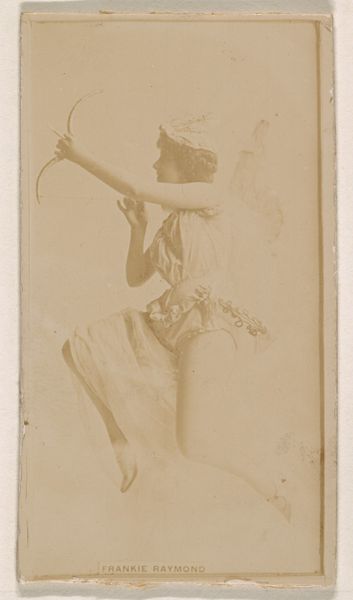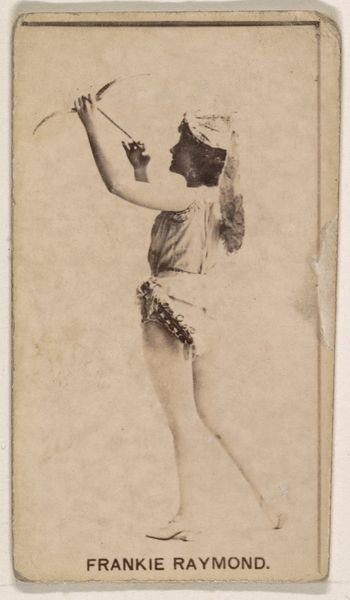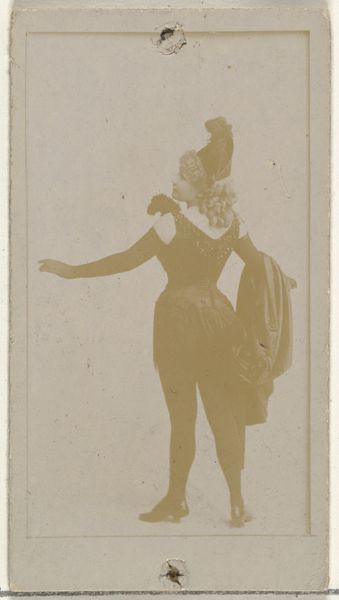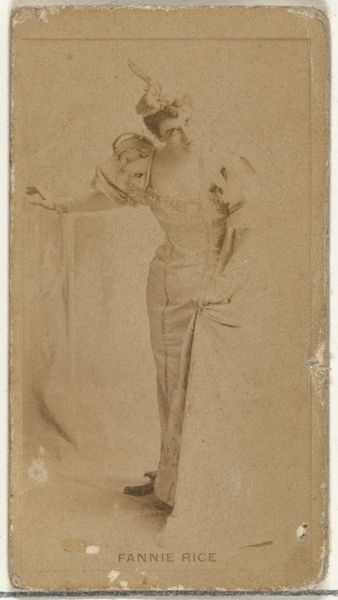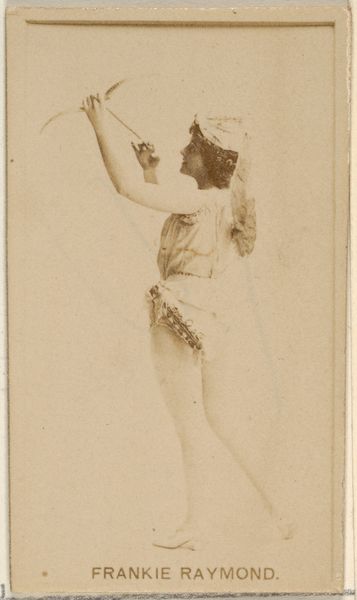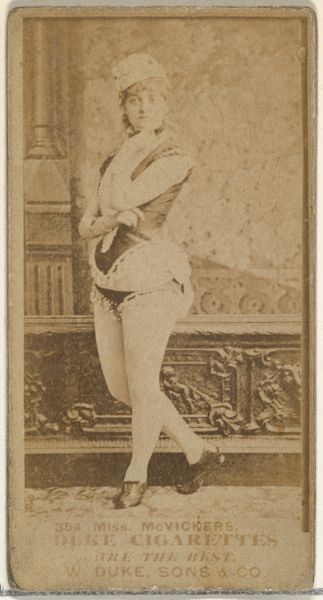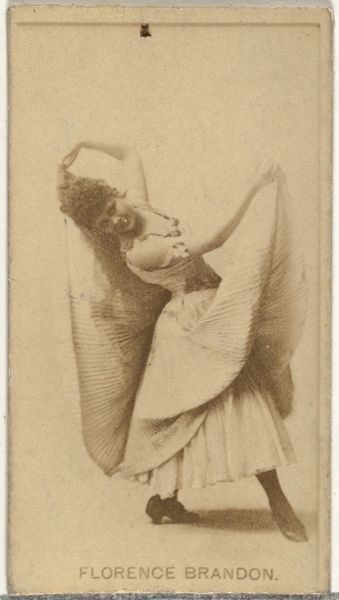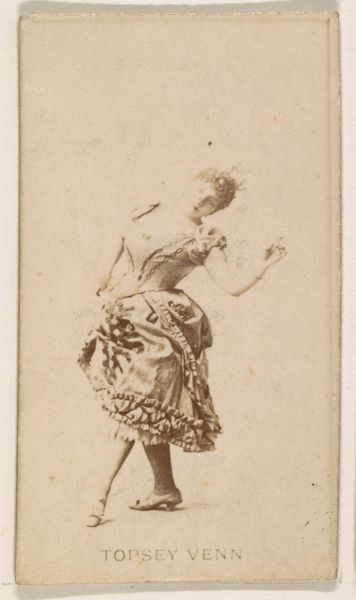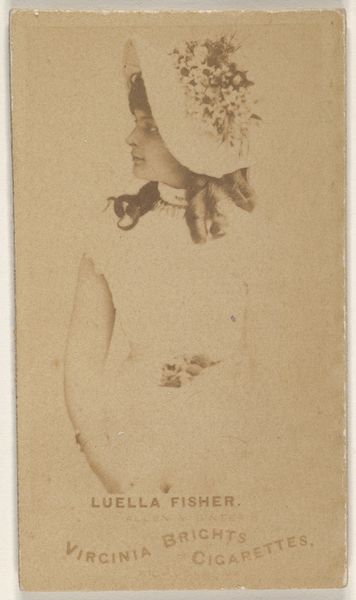
Frankie Raymond, from the Actresses series (N245) issued by Kinney Brothers to promote Sweet Caporal Cigarettes 1890
0:00
0:00
drawing, print, photography
#
portrait
#
drawing
# print
#
figuration
#
photography
#
orientalism
#
genre-painting
#
academic-art
Dimensions: Sheet: 2 1/2 × 1 7/16 in. (6.4 × 3.7 cm)
Copyright: Public Domain
Editor: Here we have a photographic print from 1890 by Kinney Brothers, part of the "Actresses" series promoting Sweet Caporal Cigarettes, featuring Frankie Raymond. It’s quite small and sepia-toned; the photographic process lends it a sense of history. What catches your eye about this piece? Curator: This isn’t merely a photograph; it’s a mass-produced commercial object intrinsically linked to the tobacco industry's exploitative labor practices. Consider the material reality: paper, ink, the photographic chemicals, and the very systems of labor required to create and distribute millions of these cards as promotional items. Do you see how it blurs the line between art, advertising, and industry? Editor: Yes, the mass production aspect does shift my understanding. The "Actresses" series seems less about individual artistic expression and more about…marketing? How does that influence our interpretation? Curator: Precisely! The image of Frankie Raymond becomes a commodity. It highlights the commodification of image and labor, even female performers, within a burgeoning capitalist system. The aesthetic style of the "orientalism" is not coincidental as tobacco companies relied heavily on narratives exoticizing eastern cultures for their marketing purposes. We need to think critically about the relationship between art, advertising, and the historical context of unequal power structures. Editor: So, you are suggesting to understand it less as art, and more as a… product of certain industrial processes and marketing techniques that were taking place at the time? Curator: Exactly. By foregrounding the material conditions of production and the cultural work this image performs, we can begin to deconstruct the power dynamics at play in late 19th-century consumer culture. What stories do these production systems themselves tell? Editor: This has made me rethink the purpose behind these seemingly innocent cards. Curator: It requires us to be critical consumers of images and to understand art's relationship to broader systems of production and consumption.
Comments
No comments
Be the first to comment and join the conversation on the ultimate creative platform.
